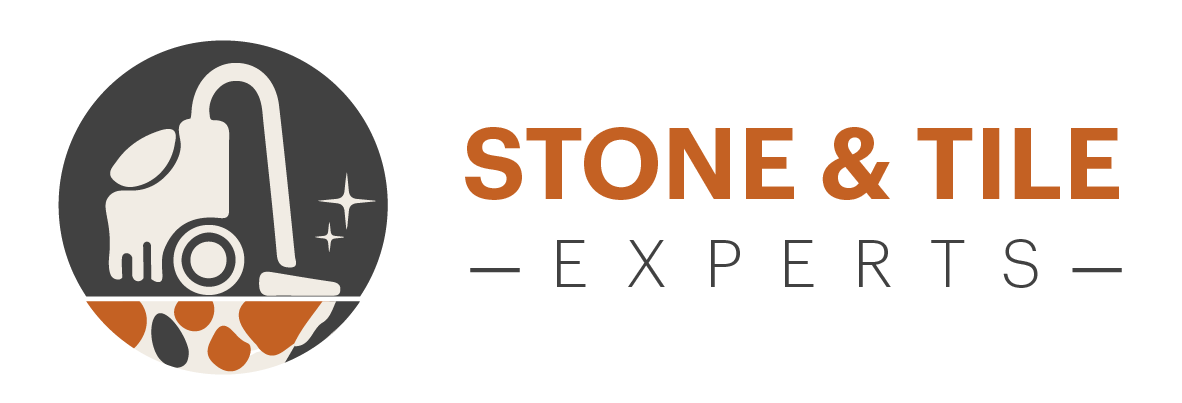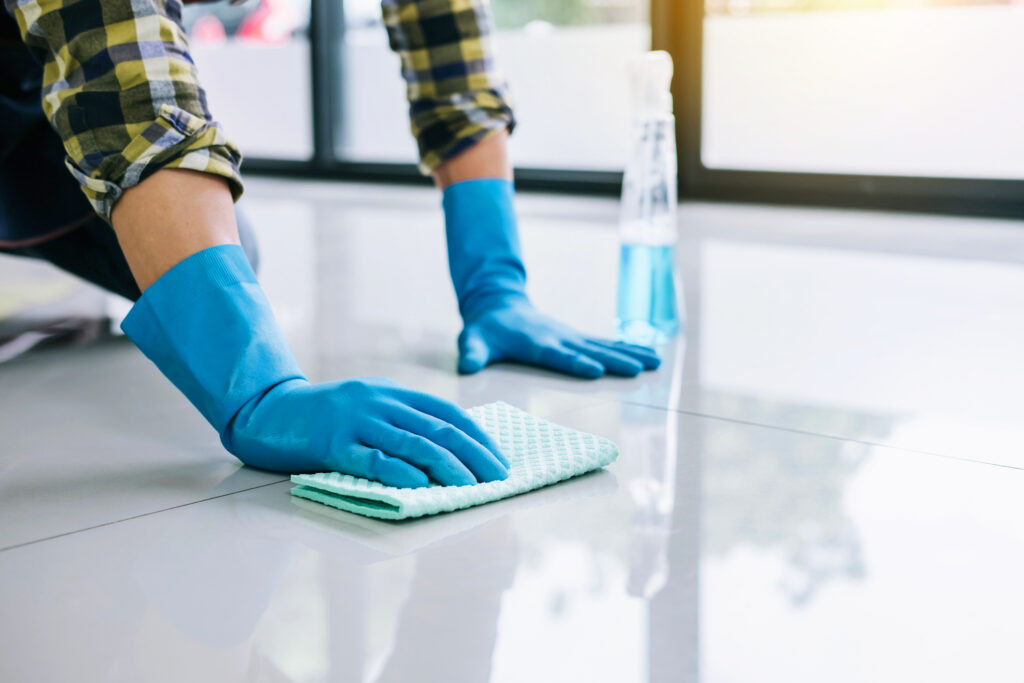The task of maintaining clean floors might appear as a basic sweep, followed by a mop, and there you have it: a clean floor. However, the true essence of floor cleaning goes beyond this seemingly simple routine.
In reality, there exists a comprehensive approach that not only ensures a thorough cleaning but also contributes to extending the lifespan of your flooring. This method is known as the 4-floor cleaning process.
Floor cleaning is like an art intertwined with science. It’s an art because it requires skill and technique to remove dirt and grime without damaging the floor surface. On the other hand, it’s a science because it involves understanding how various cleaning solutions interact with different surfaces.
The 4-floor cleaning process is a systematic method that offers a deep, comprehensive clean. This approach doesn’t just guarantee a spotless floor but also helps maintain the floor’s quality over time.
The Significance of a Clean Floor
A clean floor is often associated with the aesthetic appeal of a space. However, the significance of maintaining clean floors extends far beyond physical appearances. Here are some reasons why a cleaned floor is essential:
-
Health Benefits
A well-maintained floor minimises the presence of allergens, bacteria, and other harmful substances that can negatively impact your health. Regular floor cleaning helps remove debris, dust, and other hazards, reducing the risk of allergies and infections.
-
Safety
Cleaned floors are safer. They help reduce the risk of slips, trips and falls by eliminating potential hazards like spills, soil, sand, and dust. This is especially important in such workplaces where safety is a top priority.
-
Longevity
Regular cleaning and appropriate drying can help extend the life of your floors. Specialised cleaning methods are necessary for certain types of floors, such as hardwood, which can be severely damaged by sunlight, soap, water, and chemicals.
-
Air Quality
A well-maintained floor contributes to cleaner indoor air. Dust and allergens often accumulate on the floor and can be stirred up into the air. Proper cleaning helps keep these pollutants in check, ensuring cleaner and healthier air in your homes and offices.
-
Productivity
The condition of a workspace can psychologically impact the minds of employees, influencing their productivity and motivation. Clean workspaces benefit employees, increasing their productivity and motivation.
-
Sanitisation
Sanitising the floor with an effective cleaning solution kills germs on the floor, enhancing the hygiene and atmosphere of the space.
Maintaining clean floors is not just about aesthetics – it’s about promoting health, ensuring safety, extending longevity, improving air quality, enhancing productivity, and maintaining sanitation.
How Often Do You Need to Clean a Floor?
The frequency of floor cleaning largely depends on several factors, such as the type of flooring, the level of foot traffic, whether pets are present, and the specific conditions in your home or workplace.
As a general guideline, it’s suggested to mop your floors at least once a week. This routine helps manage stains and keeps the floor looking its best. However, if your floor experiences less foot traffic, mopping every other week might be sufficient.
But there are exceptions. For instance, if you have pets or if the floor is in a high-traffic area, you might need to mop more often. In terms of ceramic or tiled floors, twice-a-week mopping is recommended.
Regular cleaning like this may reduce the need for intensive deep cleans over time. However, kitchen floors, which are more prone to food spills and stains, ideally should undergo a thorough wash or steam cleaning every two weeks.
In short, the cleaning frequency of a floor should be determined by its usage and location. Regular cleaning not only ensures a clean and healthy environment but also contributes to the longevity of the flooring material.
It’s always better to maintain a regular cleaning schedule than to allow dirt and grime to build up, which can lead to more labour-intensive cleaning sessions and potential damage to your floors.
The 4-Floor Cleaning Process: A Comprehensive Guide
The practice of maintaining floors is a task that requires more than just an occasional sweep and mop. For optimal results, one must take a comprehensive approach targeting different dirt and grime aspects.
This is where this floor cleaning process comes into play. Suitable for a variety of flooring materials, including hardwood, tile, and carpet, this method ensures a thorough clean while preserving the quality of your floor.
-
Sweeping or Vacuuming
The first step in this process involves removing loose dirt and debris by sweeping or vacuuming. This preliminary stage prevents potential scratches and damage caused by hard particles. Regular sweeping or vacuuming mitigates the accumulation of dirt and preserves the integrity of your floor.
-
Mopping
This stage helps to lift stuck-on dirt and sanitise the floor. It’s crucial to use a cleaner appropriate for your specific floor type to avoid inadvertent damage. Moreover, ensure your mop is properly wrung out, as excess water can be detrimental, particularly to wooden floors. The goal is to have a damp, not soaking wet, mop.
-
Spot Cleaning
Following mopping, there might be stubborn spots that remain. This is where spot cleaning proves useful. Using a cloth or sponge dampened with some cleaner, gently scrub these problem areas until the stains lift. More stubborn stains may necessitate a specialised stain remover or a soft brush.
-
Drying
The final step in this process, drying, is often neglected but incredibly important. Allowing your floor to air-dry can lead to water spots or even damage. To prevent this, dry your floor using a towel or a dry mop, ensuring that no water puddles are left, particularly in the corners.
Additional Floor Cleaning Tips
In addition to the above-mentioned floor cleaning processes, here are some supplementary floor cleaning tips for effective results:
- Regular Cleaning: Don’t wait for your floor to appear dirty before commencing cleaning. Regular cleaning deters the build-up of dirt and grime and ensures your floor remains presentable at all times.
- Right Tools: Investing in quality cleaning tools can make the process more efficient and effective. High-quality tools are designed to provide superior cleaning results and can withstand regular use.
- Safety First: Always wear protective gear, such as gloves, when handling cleaning chemicals. Safety should never be compromised during the cleaning process.
- Know Your Floor: Different floor types necessitate different cleaning methods and products. Understanding the specifics of your floor type is crucial to maintaining its quality and appearance.
- Eco-Friendly Products: Consider incorporating eco-friendly cleaning products into your routine. These products are not only beneficial for the environment but can also be less harmful to your floors and your health.
By following these four processes and these additional tips, you can ensure your floors are not just clean but well maintained, contributing to their longevity and the overall cleanliness of your environment.
Conclusion
Clean, well-maintained floors are crucial not just for the aesthetics of a space but also for the health, safety, and longevity of the flooring material. The 4-floor cleaning process – sweeping or vacuuming, mopping, spot cleaning, and drying – offers a comprehensive approach to achieve this.
Furthermore, understanding the specifics of your floor type, using the right tools and products, and regular cleaning can make a significant difference. Safety should always be prioritised, especially when handling cleaning chemicals.
In essence, floor cleaning is more than a mundane chore. It’s a practice that contributes to a healthier, safer, and aesthetically pleasing environment. So, the next time you embark on this task, remember that you’re not merely removing dirt; you’re preserving the life of your floor.

